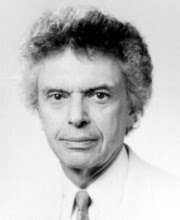Reflections About Classical Adlerian Depth Psychotherapy: Theory, Practice, and Life
A vigorously optimistic and inspiring approach to prevention and treatment, Classical Adlerian Depth Psychotherapy balances the equally important needs for individual, optimal development and social contribution. With a solid foundation in the original teachings and therapeutic style of Alfred Adler, it integrates the self-actualization research of Abraham Maslow. For more information, visit our web site at http//www.Adlerian.us
About Me

- Name: Henry T. Stein, Ph.D.
- Location: Bellingham, Washington, United States
Classical Adlerian psychotherapist and training analyst. Director of the Alfred Adler Institute of Northwestern Washington, offering distance training in Classical Adlerian psychotherapy. Tel: (360) 647-5670. Email: htstein@att.net
Sunday, February 10, 2008
In an interview about football quaterback Eli Manning with James Varney, a staff writer for the Time-Picayune in New Orleans, Dr. Stein pointed out that birth order was probably not a prime influence in the football player's family of two older, football-playing brothers. An excellent, encouraging relationship with his mother, as well as an early struggle with reading diffculties may have largely contributed to his development. Dr. Stein also clarified the distinction between positive and negative competition. To read the article, go to http://www.nola.com/printer/printer.ssf?/base/sports-1/1202020289295070.xml&coll=1
Monday, February 04, 2008
Adler's Reference to Henri Bergson
On page 203 of The Collected Clinical Works of Alfred Adler,Volume 1 - The Neurotic Character, Adler refers to Henri Bergson's concept of "identicality of every movement in life." I suspect the idea appears in Bergson's 1907 work [em]Creative Evolution[/em]. Does anyone have access to Bergson's comments on this topic? Adler's remarks are below.
In our type of the psychology of neuroses one always gets the impression that the neurotic gesture that one observes is pointing straight to the final purpose, to the fictional final goal, as if one were examining one of the middle pictures in some cinematographic film. The problem consists in recognizing these gestures, that is, the symptoms, predispositions and characteristics, and to come to understand what is their objective. In every neurotic attitude the beginning and the final goal are suggestively concealed
Bergson correctly emphasizes the identicality of every movement in life. With sufficient knowledge and enough experience one may discern the past, the present and the future, but the final goal as well, of any psychic phenomenon. And thus every psychic phenomenon, and indeed every characteristic, in a similar way as an inferior physical organ, can be viewed as a symbol of an individual life, as an individual attempt to climb up.

